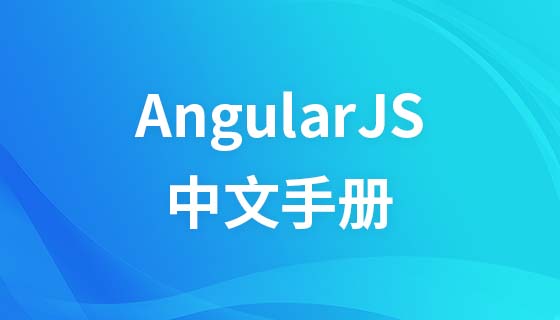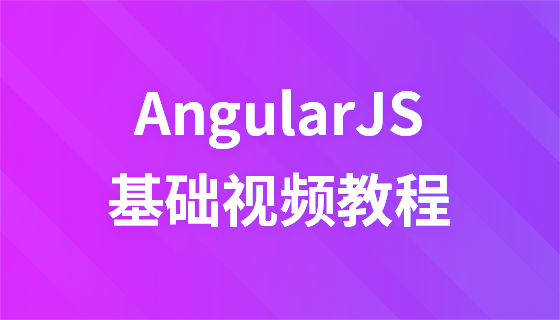什么是路由?本篇文章带大家深入了解一下angular中的路由,希望对大家有所帮助!

路由简介
路由是实现单页面应用的一种方式,通过监听hash或者history的变化,渲染不同的组件,起到局部更新的作用,避免每次URL变化都向服务器请求数据。【相关教程推荐:《angular教程》】
路由配置
配置路由模块:approuter.module.ts
const routes: Routes = [
{ path: "first", component: FirstComponent },
{ path: "parent", component: SecondComponent }
]
@NgModule({
imports: [
CommonModule,
// RouterModule.forRoot方法会返回一个模块,其中包含配置好的Router服务
// 提供者,以及路由库所需的其它提供者。
RouterModule.forRoot(routes, {
// enableTracing: true, // <-- debugging purposes only
// 配置所有的模块预加载,也就是懒加载的模块,在系统空闲时,把懒加载模块加载进来
// PreloadAllModules 策略不会加载被CanLoad守卫所保护的特性区。
preloadingStrategy: PreloadAllModules
})
],
exports: [
FirstComponent,
SecondComponent,
RouterModule
],
declarations: [
FirstComponent,
SecondComponent
]
})
export class ApprouterModule { }app.module.ts中引入改模块:
imports: [ ApprouterModule ]
重定向路由:
const routes: Routes = [
{ path: "", redirectTo: "first", pathMatch: "full" }
]通配符路由:
const routes: Routes = [
// 路由器会使用先到先得的策略来选择路由。 由于通配符路由是最不具体的那个,因此务必确保它是路由配置中的最后一个路由。
{ path: "**", component: NotFoundComponent }
]路由懒加载:
配置懒加载模块可以使得首屏渲染速度更快,只有点击懒加载路由的时候,对应的模块才会更改。
const routes: Routes = [
{
path: 'load',
loadChildren: () => import('./load/load.module').then(m => m.ListModule),
// CanLoadModule如果返回false,模块里面的子路由都没有办法访问
canLoad: [CanLoadModule]
},
]懒加载模块路由配置:
import { NgModule } from '@angular/core';
import { CommonModule } from '@angular/common';
import { LoadComponent } from './Load.component';
import { RouterModule, Routes } from '@angular/router';
import { LoadTwoComponent } from '../../../app/components/LoadTwo/LoadTwo.component';
import { LoadOneComponent } from '../../../app/components/LoadOne/LoadOne.component';
const routes: Routes = [
{
path: "",
component: LoadComponent,
children: [
{ path: "LoadOne", component: LoadOneComponent },
{ path: "LoadTwo", component: LoadTwoComponent }
]
},
]
@NgModule({
imports: [
CommonModule,
//子模块使用forChild配置
RouterModule.forChild(routes)
],
declarations: [
LoadComponent,
LoadOneComponent,
LoadTwoComponent
]
})
export class LoadModule { }懒加载模块路由导航:
<a [routerLink]="[ 'LoadOne' ]">LoadOne</a> <a [routerLink]="[ 'LoadTwo' ]">LoadTwo</a> <router-outlet></router-outlet>
路由参数传递:
const routes: Routes = [
{ path: "second/:id", component: SecondComponent },
]//routerLinkActive配置路由激活时的类 <a [routerLink]="[ '/second', 12 ]" routerLinkActive="active">second</a>
获取路由传递的参数:
import { ActivatedRoute, ParamMap, Router } from '@angular/router';
import { Component, OnInit } from '@angular/core';
import { switchMap } from 'rxjs/operators';
@Component({
selector: 'app-second',
templateUrl: './second.component.html',
styleUrls: ['./second.component.scss']
})
export class SecondComponent implements OnInit {
constructor(private activatedRoute: ActivatedRoute, private router: Router) { }
ngOnInit() {
console.log(this.activatedRoute.snapshot.params); //{id: "12"}
// console.log(this.activatedRoute);
// 这种形式可以捕获到url输入 /second/18 然后点击<a [routerLink]="[ '/second', 12 ]">second</a>
// 是可以捕获到的。上面那种是捕获不到的。因为不会触发ngOnInit,公用了一个组件实例。
this.activatedRoute.paramMap.pipe(
switchMap((params: ParamMap) => {
console.log(params.get('id'));
return "param";
})).subscribe(() => {
})
}
gotoFirst() {
this.router.navigate(["/first"]);
}
}queryParams参数传值,参数获取也是通过激活的路由的依赖注入
<!-- queryParams参数传值 -->
<a [routerLink]="[ '/first' ]" [queryParams]="{name: 'first'}">first</a>
<!-- ts中传值 -->
<!-- this.router.navigate(['/first'],{ queryParams: { name: 'first' }); -->路由守卫:canActivate,canDeactivate,resolve,canLoad
路由守卫会返回一个值,如果返回true继续执行,false阻止该行为,UrlTree导航到新的路由。 路由守卫可能会导航到其他的路由,这时候应该返回false。路由守卫可能会根据服务器的值来 决定是否进行导航,所以还可以返回Promise或 Observable,路由会等待 返回的值是true还是false。 canActivate导航到某路由。 canActivateChild导航到某子路由。
const routes: Routes = [
{
path: "parent",
component: ParentComponent,
canActivate: [AuthGuard],
children: [
// 无组件子路由
{
path: "",
canActivateChild: [AuthGuardChild],
children: [
{ path: "childOne", component: ChildOneComponent },
{ path: "childTwo", component: ChildTwoComponent }
]
}
],
// 有组件子路由
// children: [
// { path: "childOne", component: ChildOneComponent },
// { path: "childTwo", component: ChildTwoComponent }
// ]
}
]import { Injectable } from '@angular/core';
import { CanActivate, ActivatedRouteSnapshot, RouterStateSnapshot } from '@angular/router';
@Injectable({
providedIn: 'root',
})
export class AuthGuard implements CanActivate {
canActivate(
next: ActivatedRouteSnapshot,
state: RouterStateSnapshot): any {
// return true;
// 返回Promise的情况
return new Promise((resolve,reject) => {
setTimeout(() => {
resolve(true);
}, 3000);
})
}
}import { Injectable } from '@angular/core';
import {
ActivatedRouteSnapshot,
RouterStateSnapshot,
CanActivateChild
} from '@angular/router';
@Injectable({
providedIn: 'root',
})
export class AuthGuardChild implements CanActivateChild {
constructor() {}
canActivateChild(
route: ActivatedRouteSnapshot,
state: RouterStateSnapshot): boolean {
return true;
}
}parent.component.html路由导航:
<!-- 使用相对路径 --> <a [routerLink]="[ './childOne' ]">one</a> <!-- 使用绝对路径 --> <a [routerLink]="[ '/parent/childTwo' ]">two</a> <router-outlet></router-outlet>
canDeactivate路由离开,提示用户没有保存信息的情况。
const routes: Routes = [
{ path: "first", component: FirstComponent, canDeactivate: [CanDeactivateGuard] }
]import { FirstComponent } from './components/first/first.component';
import { RouterStateSnapshot } from '@angular/router';
import { ActivatedRouteSnapshot } from '@angular/router';
import { Injectable } from '@angular/core';
import { CanDeactivate } from '@angular/router';
@Injectable({
providedIn: 'root',
})
export class CanDeactivateGuard implements CanDeactivate<any> {
canDeactivate(
component: any,
route: ActivatedRouteSnapshot,
state: RouterStateSnapshot
): boolean {
// component获取到组件实例
console.log(component.isLogin);
return true;
}
}canLoad是否能进入懒加载模块:
const routes: Routes = [
{
path: 'load',
loadChildren: () => import('./load/load.module').then(m => m.LoadModule),
// CanLoadModule如果返回false,模块里面的子路由都没有办法访问
canLoad: [CanLoadModule]
}
]import { Route } from '@angular/compiler/src/core';
import { Injectable } from '@angular/core';
import { CanLoad } from '@angular/router';
@Injectable({
providedIn: 'root',
})
export class CanLoadModule implements CanLoad {
canLoad(route: Route): boolean {
return true;
}
}resolve配置多久后可以进入路由,可以在进入路由前获取数据,避免白屏
const routes: Routes = [
{ path: "resolve", component: ResolveDemoComponent, resolve: {detail: DetailResolver}
]import { Injectable } from '@angular/core';
import { Resolve, ActivatedRouteSnapshot, RouterStateSnapshot } from '@angular/router';
@Injectable({ providedIn: 'root' })
export class DetailResolver implements Resolve<any> {
constructor() { }
resolve(route: ActivatedRouteSnapshot, state: RouterStateSnapshot): any {
return new Promise((resolve,reject) => {
setTimeout(() => {
resolve("resolve data");
}, 3000);
})
}
}ResolveDemoComponent获取resolve的值
constructor(private route: ActivatedRoute) { }
ngOnInit() {
const detail = this.route.snapshot.data.detail;
console.log(detail);
}监听路由事件:
constructor(private router: Router) {
this.router.events.subscribe((event) => {
// NavigationEnd,NavigationCancel,NavigationError,RoutesRecognized
if (event instanceof NavigationStart) {
console.log("NavigationStart");
}
})
}更多编程相关知识,请访问:编程视频!!
以上就是深入了解Angular中的路由的详细内容,更多请关注php中文网其它相关文章!





Copyright 2014-2024 https://www.php.cn/ All Rights Reserved | php.cn | 湘ICP备2023035733号